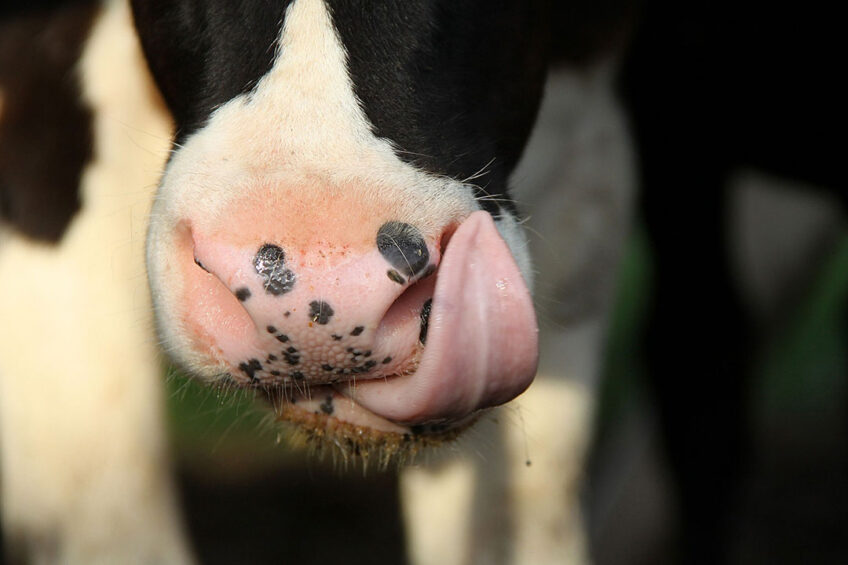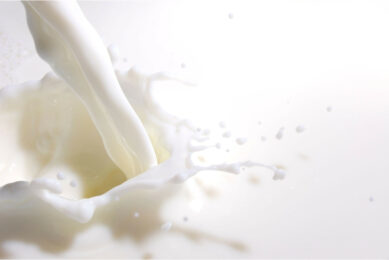Benefits of waste milk in dairy calves

Due to the continuous expansion of dairy farms, a large amount of waste milk including transitional milk, abnormal milk and milk with antibiotic residues has been produced. Utilising this waste milk might save costs for most dairies. In a new study, researchers found comparable benefits of waste milk to milk replacers.
Calves are born with an immature immune system and thus rely on colostrum to acquire passive immunity during the first days of life. After successful transfer of passive immunity, a liquid feed is the major nutrient source that can have a significant impact on the growth and development of a calf’s immune system before weaning. Whole milk, milk replacer and waste milk are the most common liquid feed for calves on dairy farms. Although whole milk is generally considered the best liquid feed for calves, it is mainly produced for human consumption.
On the other hand, milk replacer is made up of high-quality materials that are easy to digest and can meet the nutritional requirements of calves; but it’s not the cheapest source of nutrients for calves. Most research on calf nutrition has focused on whole milk and milk replacers.
Waste milk study
In this study published in the journal Animal Feed Science and Technology, researchers investigated the effect of different liquid feeds on the growth, immunity and gut health of dairy calves. They used 24 Holstein male calves. The calves were fed 4 litres of whole milk twice a day after the successful transfer of passive immunity until 7 days of age. From day 8 to 70, calves received either of 3 diets:
- Milk replacer (100% milk replacer)
- Mixture (50% milk replacer mixed with 50% pasteurised waste milk)
- Waste milk (100% pasteurised waste milk).
The calves were weaned at day 56 but the experiment continued up to day 70.
Growth performance
The researchers found that feeding waste milk gave higher growth performance in Holstein calves compared to milk replacer. Their results showed that feeding waste milk improved hip width, hip height, heart girth, weight gain and feed efficiency compared to feeding milk replacer. Feed efficiency (BW gain/total DMI) was significantly higher in the waste milk group during the whole period. The overall growth performance was attributed to the lower energy value of the milk replacer (1493.6 MJ/d) compared to waste milk (1547.0 MJ/d). They remarked that calves receiving milk replacer may not have sufficient energy to cope with cold conditions and to support their growth compared with those consuming waste milk.
Body skeletal growth is an important indicator reflecting overall development of calves, as well as an intuitive reflection of body growth and feeding level. “Our study showed that calves fed waste milk had greater skeletal growth and development, which may be associated with the change in body weight, as other studies show a significant correlation between body weight and heart girth,” they said.
Immunity
Feeding waste milk showed higher levels of plasma immune parameters compared to milk replacer. Plasma concentrations of IgA, IgM, IgG and interleukin 10 (IL-10) were higher, whereas tumour necrosis factor-alpha (TNF-α) was lower in waste milk than in the milk replacer group.
Table 1 – Effects of waste milk on growth performance of dairy calves from day 8 to day 70
The reason for the differences in immune parameters of the liquid feeds was suggested to result from the changes of gut microbiota. Higher immunoglobulin concentrations were suggested to result from the probable existence of antibiotic residues in waste milk that can improve the phagocytic activity of granulocytes in the blood.
In addition to immunoglobulins, cytokines are essential to the immune function of calves. IL-6 is associated with the growth and differentiation of lymphocytes and B cells, and TNF-α often induces partial inflammatory changes and mediates systemic acute-phase responses to tissue injury and microbial invasion. Lower plasma concentrations of IL-6 and TNF-α in the calves of the waste milk group showed the potential of waste milk to improve the level of immunity in calves. A higher concentration of IL-10 in the waste milk group compared to milk replacer was found in this study. IL-10 is an anti-inflammatory cytokine that plays a pivotal role in the function of regulatory T cells that control inflammatory responses in the intestine.
Modulation of microbiota
Most liquid feeds flow directly into the abomasum, and thus the intestine is the major digestion site for pre-weaned calves. Gut microbiota during early life plays a vital role in modulating host intestinal barrier function, immune system development, metabolism and health. In this research, there was a decrease in bacterial diversity, for example, Escherichia coli and Lactobacillus were not different among treatments. The researchers said that a potential explanation for the decreased bacterial diversity observed in the mixture group and waste milk group may be related to antimicrobial effects of antibiotics that might be present in waste milk.
Table 2 – Effects of waste milk on plasma immune indices of dairy calves at day 70
In this study, differences in faecal microbiota were only observed between milk replacer and waste milk groups only at day 49 of age. However, from day 49 to 70, the analysis of differential abundance showed that the increase in the relative abundance of Prevotellaceae NK3B31 group and the decrease in that of Bacteroides was higher in waste milk than in the mixture group. “As Bacteroides are markers of inflammation, the decrease in the relative abundance of these Bacteroides suggests that calves fed waste milk may establish more resistance to pathogens,” said the research team. They added that Prevotellaceae NK3B31 group can promote anti-inflammatory responses and that the differential abundance of this genus may explain the change in plasma concentrations of IgG and IL-2 between pre-weaned and post-weaned calves observed in this study.
From this study, the researchers concluded that feeding waste milk to Holstein calves improves growth performance and health status compared to a milk replacer, which might be explained by enhanced immune function modulated by gut microbiota.
* This article is based on the original by Xinyue Zhang, Tao Ma, Chuanteng Cheng, Jingyi Lv, Haixin Bai, Xin Jiang, Yonggen Zhang and Hangshu Xin. Effects of waste milk on growth performance, immunity, and gut health of dairy calves. Animal Feed Science and Technology.
Join 13,000+ subscribers
Subscribe to our newsletter to stay updated about all the need-to-know content in the dairy sector, two times a week.










